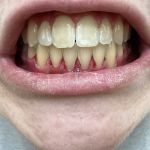Sedation Options for Oral Surgery: Choosing the Best Option for Your Comfort
Oral surgery can be a daunting experience for many individuals, especially when it involves a procedure that requires a significant amount of discomfort or pain management. Whether you're undergoing a tooth extraction, dental implant placement, or any other oral surgical procedure, it's essential to feel comfortable and relaxed throughout the process. That’s where sedation options for oral surgery come into play. Understanding the different types of sedation available to patients is key to making an informed decision about which option works best for you.
In this article, we will explore the various sedation methods used in oral surgery, their benefits, and the factors that might influence your choice. With the right sedation, you can significantly reduce any fear or discomfort, allowing you to go through the surgery with peace of mind. Whether you're someone who gets anxious just thinking about the dentist or you simply want a more comfortable experience, there’s a sedation method designed for you.
1. What Is Sedation Dentistry?
Sedation dentistry involves the use of medication to help patients relax during dental procedures, including oral surgeries. It's important to note that sedation does not put the patient to sleep; instead, it helps them feel relaxed and at ease. Depending on the type of sedation, patients may still be awake but in a deeply relaxed state, or they may be put into a light sleep where they have little to no awareness of the procedure happening around them.
The primary purpose of sedation is to alleviate fear, anxiety, and discomfort, especially for individuals who experience dental phobia or have sensitive gag reflexes. During oral surgeries like tooth extractions or implant placements, sedation ensures that patients are not disturbed by the process. Some sedation options also reduce memory of the procedure, allowing patients to forget the unpleasant aspects of surgery entirely.
2. Types of Sedation for Oral Surgery
When it comes to sedation options for oral surgery, there are several methods that your dentist or oral surgeon might recommend. The choice of sedation depends on the type of procedure, the patient’s anxiety levels, and their overall health. Let’s take a look at the most common sedation methods used in oral surgery:
Oral Sedation
Oral sedation is one of the most common and convenient sedation options for oral surgery. As the name suggests, it involves taking a sedative in pill form before the procedure. The sedative can help you feel relaxed and calm during your surgery. Depending on the dose, oral sedation can range from mild to moderate. For minor procedures, a lower dose may be enough to help you feel at ease, while for more invasive surgeries, a higher dose might be needed to ensure relaxation.
The benefits of oral sedation are that it’s easy to administer, and it doesn’t require an IV. You simply take the pill before the procedure, and by the time the surgery starts, you’ll already feel the calming effects. It’s an excellent option for patients who experience mild to moderate anxiety. However, it’s important to arrange for someone to drive you home afterward, as the sedative will leave you feeling drowsy.
IV Sedation
IV sedation, also known as intravenous sedation, is a more advanced option that’s typically used for more complex oral surgeries. With IV sedation, the medication is administered directly into your bloodstream through a vein, allowing the sedative to take effect quickly. This method helps you relax deeply, and depending on the dosage, you may feel drowsy or fall into a light sleep. The key advantage of IV sedation is its ability to provide a quick and controlled level of sedation, which can be adjusted throughout the procedure as needed.
IV sedation is often used for patients who require extensive oral surgery, such as multiple tooth extractions, dental implants, or bone grafts. One of the reasons many patients choose IV sedation is that it offers deep relaxation while maintaining the ability to respond to the surgeon’s instructions if necessary. After the procedure, you will need someone to drive you home, as the effects of the sedative can linger for a while.
Nitrous Oxide (Laughing Gas)
Nitrous oxide, commonly known as laughing gas, is a mild sedative that’s often used for less invasive procedures. This option involves inhaling a mixture of nitrous oxide and oxygen through a mask placed over your nose. The effects of nitrous oxide are felt almost immediately, and it helps you feel calm, relaxed, and sometimes euphoric. Unlike other forms of sedation, nitrous oxide allows you to remain fully conscious and aware of your surroundings, but you will feel no pain or discomfort.
The benefit of nitrous oxide is that it works quickly, and its effects wear off just as fast once the mask is removed. This makes it an excellent choice for patients who need to return to their normal activities immediately after the procedure. Nitrous oxide is particularly suitable for patients who have mild anxiety or who need to undergo shorter procedures. It’s also safe for most patients, including children and pregnant women (in some cases).
3. Local Anesthesia: A Basic Sedation Option
Local anesthesia is a common form of sedation used in oral surgery, especially for procedures that only require a minimal level of discomfort. In this case, the surgeon injects a local anesthetic directly into the area being worked on. This numbs the tissue and ensures that you don’t feel any pain during the procedure. Local anesthesia is often used in combination with other sedatives, such as nitrous oxide, to keep the patient relaxed while still being fully conscious.
Local anesthesia is ideal for procedures that don’t require deep sedation, such as a simple tooth extraction, cavity filling, or gum treatment. The advantage of local anesthesia is that it doesn’t require any special preparation or recovery time. However, patients may still experience anxiety or discomfort during more complex procedures, which is why it’s often paired with other sedation methods.
4. Choosing the Right Sedation Option for You
Choosing the best sedation option for your oral surgery is an important decision that depends on several factors. The first thing to consider is the level of anxiety you experience at the thought of undergoing surgery. If you’re someone who feels anxious but can tolerate minor discomfort, oral sedation or nitrous oxide might be the right fit for you. On the other hand, if you have a strong fear of the procedure or need more extensive surgery, IV sedation or general anesthesia may be more appropriate.
Your overall health and medical history are also important factors. Certain sedation methods, such as IV sedation, require that you are in generally good health, while others, like nitrous oxide, may be safer for individuals with certain medical conditions. It’s essential to discuss your medical history with your oral surgeon, who will help you choose the best option based on your needs.
5. Recovery and Aftercare Following Sedation
After your oral surgery, your recovery process will depend on the type of sedation used. For mild sedation, such as nitrous oxide or oral sedation, you may feel drowsy for a short time but can typically return to normal activities within a few hours. However, if you received IV sedation or general anesthesia, you will likely need to rest for a longer period as the effects wear off. It’s crucial to follow your surgeon’s aftercare instructions carefully to ensure a smooth recovery.
For those who have undergone more extensive sedation, such as IV sedation or general anesthesia, you should arrange for a friend or family member to drive you home after the procedure. Avoid any heavy activity or strenuous tasks for at least 24 hours to allow the sedative to completely wear off. Your surgeon will provide you with instructions on when you can resume normal activities and what to expect during your recovery period.
Conclusion
Sedation options for oral surgery play a vital role in ensuring a comfortable and stress-free experience for patients. Whether you’re undergoing a minor procedure or a more complex surgery, the right sedation method can make all the difference in helping you feel relaxed and at ease. From oral sedation to IV sedation, nitrous oxide, and local anesthesia, each method offers unique benefits tailored to different needs. Be sure to consult with your oral surgeon to determine which sedation option is best for you and your oral health needs. If you’re ready to schedule your procedure or have questions about sedation options, visit Dentistry Toothtruth for more information.
OLD Keywords: sedation options for oral surgery, oral surgery sedation, IV sedation, nitrous oxide, local anesthesia, best sedation for oral surgerySEO Title: Best Sedation Options for Oral Surgery: How to Choose the Right One for YouSEO Keywords: sedation options for oral surgery, oral surgery sedation, IV sedation, nitrous oxide, local anesthesia, best sedation for oral surgerySEO Description: Explore the best sedation options for oral surgery to make your experience as comfortable as possible. Learn about IV sedation, nitrous oxide, local anesthesia, and more.






 Dr. James L. Pelletier4.0 (79 review)
Dr. James L. Pelletier4.0 (79 review) Osseo Family Dental4.0 (135 review)
Osseo Family Dental4.0 (135 review) Wayne hills dental0.0 (0 review)
Wayne hills dental0.0 (0 review) California Dental Group4.0 (235 review)
California Dental Group4.0 (235 review) Coast Dental4.0 (545 review)
Coast Dental4.0 (545 review) Pro Dentists of Buford4.0 (575 review)
Pro Dentists of Buford4.0 (575 review) The Importance of Oral Health Education During Pregnancy for a Healthy Pregnancy
The Importance of Oral Health Education During Pregnancy for a Healthy Pregnancy Best Tips for Brushing Your Teeth Properly for Healthy Gums: Essential Techniques for Oral Health
Best Tips for Brushing Your Teeth Properly for Healthy Gums: Essential Techniques for Oral Health Why Skipping Dental Checkups Can Lead to Bigger Oral Health Problems
Why Skipping Dental Checkups Can Lead to Bigger Oral Health Problems Advantages of Porcelain Dental Restorations
Advantages of Porcelain Dental Restorations How Can Diabetes Cause Tooth and Gum Problems? Preventing and Managing Oral Health Issues
How Can Diabetes Cause Tooth and Gum Problems? Preventing and Managing Oral Health Issues Healthy Habits for Promoting Good Oral Health and Hygiene: Tips for a Healthy Smile
Healthy Habits for Promoting Good Oral Health and Hygiene: Tips for a Healthy Smile